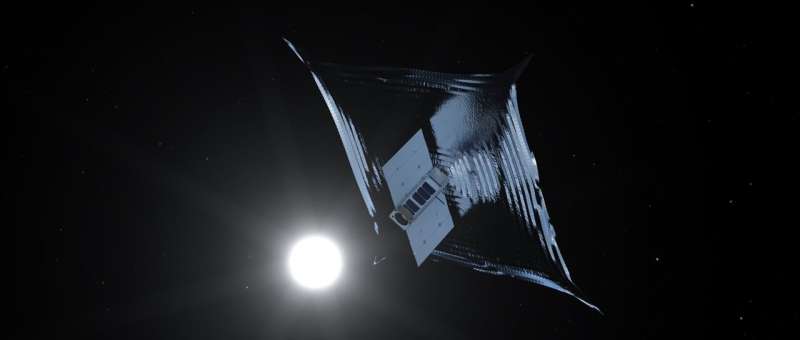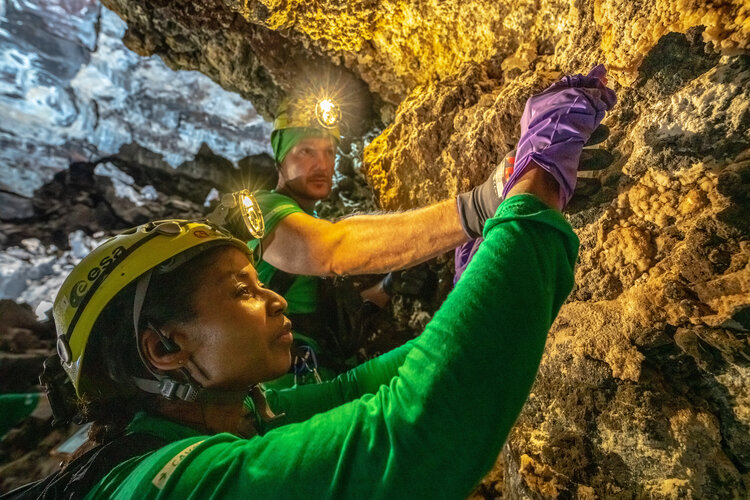
Copernical Team
SpaceX successfully launches 53 Starlink satellites
 SpaceX successfully launched 53 Starlink satellites into low Earth orbit early Thursday from Florida's Kennedy Space Center.
The two-stage Falcon 9 rocket with the stack of satellites mounted on top lifted off from Launch Complex 39A at 2:58 a.m. EST, after its launch time had been pushed from 19 minutes earlier.
The first-stage booster, which previously supported four other miss
SpaceX successfully launched 53 Starlink satellites into low Earth orbit early Thursday from Florida's Kennedy Space Center.
The two-stage Falcon 9 rocket with the stack of satellites mounted on top lifted off from Launch Complex 39A at 2:58 a.m. EST, after its launch time had been pushed from 19 minutes earlier.
The first-stage booster, which previously supported four other miss Boeing gets $1.6 bn contract for US ballistic missile upkeep
 Boeing has been awarded a $1.6 billion contract to provide guidance subsystem support for US Minuteman III Intercontinental ballistic missiles, the Pentagon said Wednesday.
Work will be performed at Hill Air Force Base in the state of Utah, and is expected to be completed by Feb. 1, 2039, the Department of Defense said in a statement.
The Minuteman III, which has been in service for 50 y
Boeing has been awarded a $1.6 billion contract to provide guidance subsystem support for US Minuteman III Intercontinental ballistic missiles, the Pentagon said Wednesday.
Work will be performed at Hill Air Force Base in the state of Utah, and is expected to be completed by Feb. 1, 2039, the Department of Defense said in a statement.
The Minuteman III, which has been in service for 50 y Curious comet's rare close approach
 Comet C/2022 E3 (ZTF) today makes its closest approach to Earth before likely leaving our Solar System forever. At billions of years old and not seen since Neanderthals roamed, the green comet continues to intrigue as it grows an apparent third tail and unexpectedly - but intriguingly - failed to wow scientists when observed in x-ray light.
Grab a pair of (good) binoculars and under dark s
Comet C/2022 E3 (ZTF) today makes its closest approach to Earth before likely leaving our Solar System forever. At billions of years old and not seen since Neanderthals roamed, the green comet continues to intrigue as it grows an apparent third tail and unexpectedly - but intriguingly - failed to wow scientists when observed in x-ray light.
Grab a pair of (good) binoculars and under dark s Space Coast bustling with 4 crew launches on tap from SpaceX, Boeing

Before summer, 14 more humans could launch from U.S. soil as SpaceX has three missions set to lift off from Kennedy Space Center on Crew Dragons while Boeing looks to send its CST-100 Starliner up to the International Space Station for the first time with people on board.
"We're heading into, I would say one of the busiest increments in the history of station," said Kathryn Lueders, NASA's associate administrator for the Space Operations Mission Directorate at press conference last week. "We have a string of critical missions coming up."
That includes not only crewed flights from the Space Coast, but a replacement Soyuz capsule to be sent up from Russia to the station for one damaged by micrometeorites and resupply missions from SpaceX, Northrop Grumman and Russia in the next four months.
The first crewed flight, though, coming no earlier than Feb. 26 is the Crew-6 mission flying on SpaceX's Crew Dragon Endeavour taking up NASA astronaut and mission commander Stephen Bowen, flying for the fourth time, and first timers pilot Woody Hoburg of NASA, United Arab Emirates astronaut Sultan AlNeyadi and Roscosmos cosmonaut Andrey Fedyaev.
Successful in-flight demonstration of the ADEO braking sail

The Drag Augmentation Deorbiting System (ADEO) breaking sail was successfully deployed from the ION satellite carrier in late December 2022.
ESA YGT applications now open!

The 2023 Young Graduate Trainee positions are now open for applications! Opportunities are available in engineering, science, IT and business services. Find out more and apply now.
Curious comet’s rare close approach

Turning astronauts into Moon explorers
Astral alchemy
 The Standard Model of particle physics tells us that most particles we observe are made up of combinations of just six types of fundamental entities called quarks. However, there are still many mysteries, one of which is an exotic, but very short-lived, Lambda resonance known as ^(1405).
For a long time, it was thought to be a particular excited state of three quarks-up, down, and strange-
The Standard Model of particle physics tells us that most particles we observe are made up of combinations of just six types of fundamental entities called quarks. However, there are still many mysteries, one of which is an exotic, but very short-lived, Lambda resonance known as ^(1405).
For a long time, it was thought to be a particular excited state of three quarks-up, down, and strange- Setting sail for safer space
 Image:
Setting sail for safer space
Image:
Setting sail for safer space 
